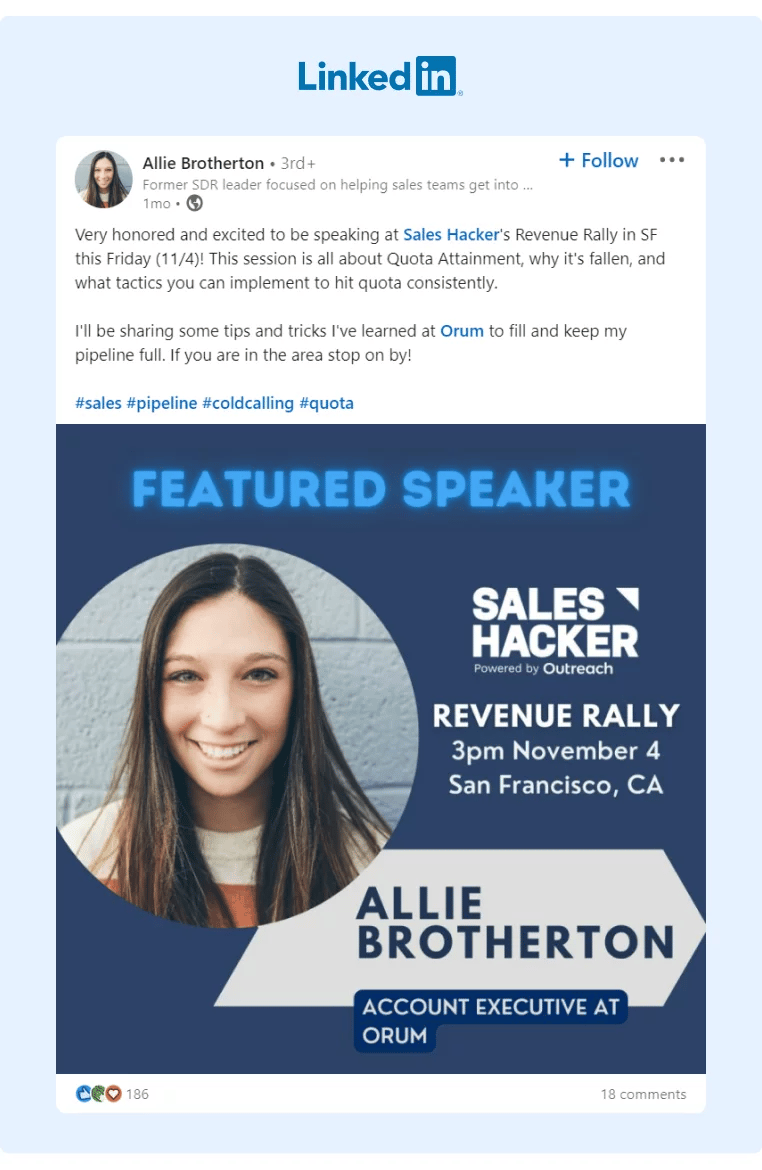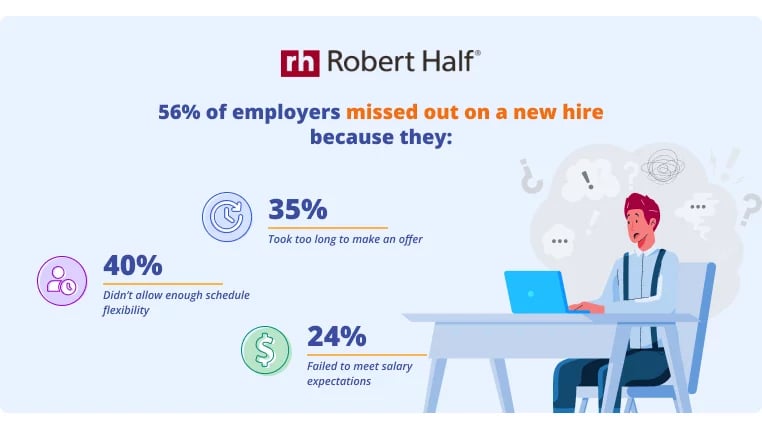How To Create an Employer Branding Strategy
At some point in your career, you’ve probably had a dream company you wanted to work for. You subscribed to their career page, read all their content, and tried your best to make a good impression on people who work there.
What made that company so attractive to you? Maybe you were first wowed as a customer. Maybe it was their swanky offices or name prestige. Or maybe you met some employees who seemed like they were genuinely happy and doing important work.
If you made it to that dream company, congratulations! Was working there everything you anticipated it to be? Maybe, maybe not. That magic that you felt — that’s thanks to employer branding.
What Is Employer Branding and Why Does It Matter?
Simply put, employer branding is how people perceive your brand as an employer. This perception covers both internal and external audiences and is influenced by a company’s overall brand and customer experience.
Employer branding matters because employees are a company’s top resource. The talent you can recruit (and keep) affects every aspect of a business, from the C-suite to janitorial services. Without competent people to keep your business running, you can’t succeed and grow.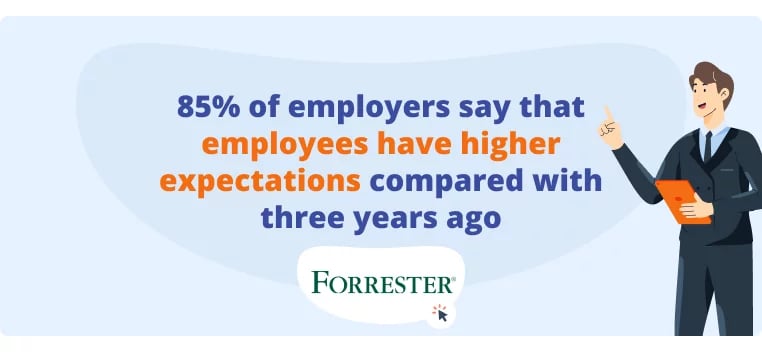
Research from Indeed and Forrester Consulting in 2022 showed that 85% of employers say that employees have higher expectations compared with three years ago. Creating and executing a successful employer branding strategy can help businesses to:
-
Recruit talent
-
Retain talent
-
Increase employee satisfaction and engagement
-
Strengthen your overall brand perception
-
Grow revenue
Whether you recognize or manage it, your company has an employer brand. Every customer experience impacts your employer brand. When an employee speaks at an event or posts on LinkedIn, it affects your brand. When people read about your business—about everything from layoffs to community service—it affects your brand.
No, you can’t control all of those things. You can, however, put a strategy in place to strengthen your employer brand by creating a unique employer value proposition and implementing that brand promise across the company.
What Is an Employer Branding Strategy?
An employer branding strategy is a document to help you plan, execute, and measure your employer branding efforts. An employer brand strategy will answer what your goals are, who is responsible, and how they will execute and measure the work. This goes beyond simply recruitment or retention—it’s a comprehensive approach that includes the employee experience from interest to onboarding to advancement and includes employee touchpoints with HR, IT, and individual departments.
How To Create an Employer Branding Strategy
Putting together an employer branding strategy is no small task! You’ll need time, resources, and persistence to make it work, particularly at a large organization. Follow these steps to create a successful strategy your entire company can get behind.
Identify the Players
Because your employer brand is influenced by many factors, multiple departments have a role to play and a stake in the outcome. To get all those groups collaborating, you need buy-in from the highest levels.
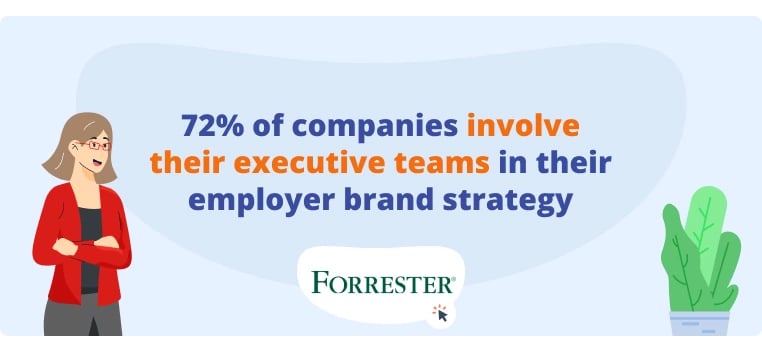
In its employer branding research, Forrester Consulting found that 72% of companies involve their executive teams in their employer brand strategy. Of the 400 companies surveyed, most involve these departments:
-
Human resources/training (55%)
-
Marketing/advertising (47%)
-
IT (46%)
-
Product (36%)
-
Sales (33%)
-
Finance/accounting (32%)
Identify the departments you’ll need to release data or help with execution like marketing. You may also leverage a creative agency or consultant to support your efforts. As you assemble a team, build relationships, and cast a vision for the collective benefits of a strong employer brand.
Measure Your Employer Brand Perception
If you’re making a case for your C-suite to invest resources in employee branding, an employer brand audit is a great place to start. Since every company already has a brand, showing your executives your current brand perception can be eye-opening.
Measuring your brand also gives you a baseline to set goals against as you move forward with your strategy. Tap into these gold mines to find insights about your brand:
-
Mine employee reviews on sites like Glassdoor and Indeed. See which areas your company performs well on and which they don’t, and extract quotes and themes.
-
Examine employee satisfaction data to see how current employees perceive the company as an employer
-
Look at recruitment data, particularly any insights from candidates about why they didn’t accept job offers
-
Look at anonymized exit interviews to see the top reasons employees leave your company
-
Analyze media coverage of your company or leadership in the news. Are employee stories positive, negative, or neutral?
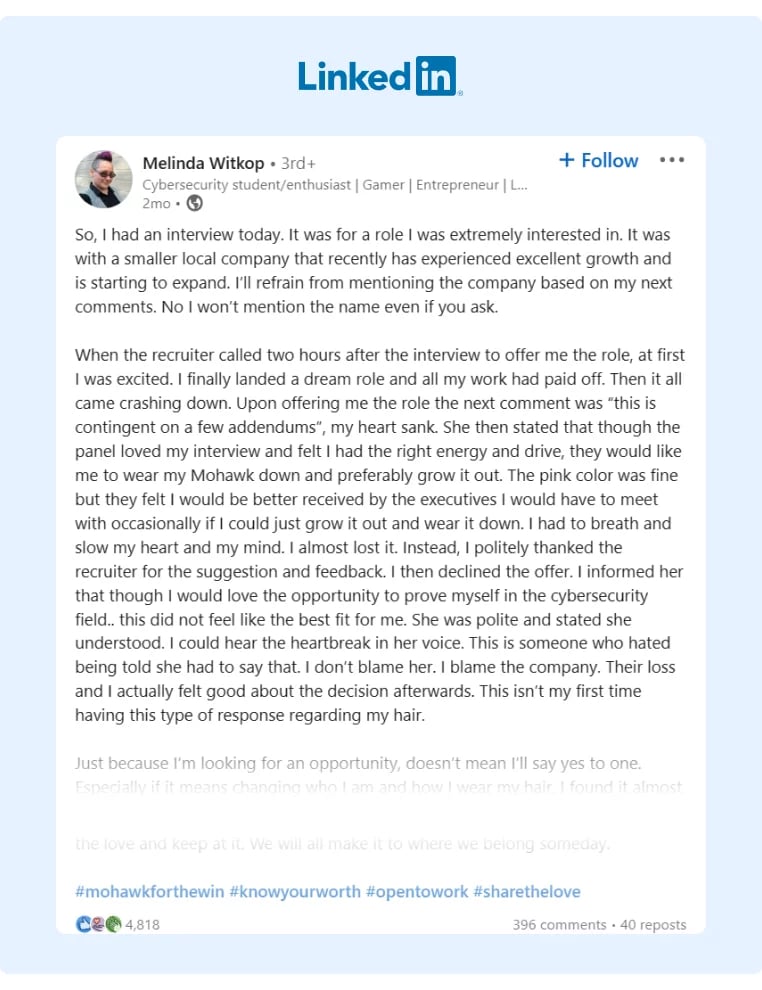
Compile this information into a report showing data and a SWOT analysis that you can share with leadership.
Map Your Candidate and Employee Experiences
Next, create customer journey maps for both the candidate experience and the employee experience showing steps they must take and communications they receive from the company.
Audit Your Job Application Process
Map the steps each candidate may take before and during an interview process, including online applications, recruiter calls, interviews, and the offer stage. Map out how long the entire process takes and how it transitions into employee onboarding. How are rejected candidates treated?
Audit Key Employee Moments
Identifying what makes or breaks an employee's experience isn’t quite as clear-cut since each job is unique with different supervisors and experiences. Look, then, at what each employee has in common like onboarding, annual reviews, promotions, benefits enrollment, and leaving the company.
What does each of these steps look like for employees? Is there a centralized onboarding experience, or is it different for each department? Do employees have a clear understanding of promotion structures and employee development opportunities?
Once you’ve mapped and analyzed both these experiences, you can begin to pinpoint strengths as well as pain points in each process. For example, perhaps you’re losing out on top talent because your interview process is too long or cumbersome. Perhaps your employees love their work but find benefits enrollment or annual reviews painful.
56% of employers missed out on a new hire because they:
-
Didn’t allow enough schedule flexibility (40%)
-
Took too long to make an offer (35%)
-
Failed to meet salary expectations (24%)
These are easy traps to fix.
Perception Problems vs. Systemic Problems
Once you’ve identified your players and strengths, weaknesses, and opportunities, you’re ready to jump into the tactics of your plan.
As you examine your current brand perception, you’ll find that some problems have a perception problem. Perception problems can be addressed through marketing and storytelling: finding and amplifying employee stories that bolster your message. Other issues have a fairly straightforward solution: you can make meaningful progress toward employee appreciation or learning and development within a year with the right resources.
Other issues like pay, low morale, or DEI (diversity, equality, and inclusion) are deeper problems that will need a systemic fix. You can’t fix them overnight or in a single year. Set some long-term goals for systemic problems that plague your employer brand and work toward being a better employer. Outline how you’ll review and improve the plan each year.
Set Benchmarks and Resources
A good employer branding strategy must include benchmarks to measure progress against goals. Choose KPIs that are specific and measurable, for example, a 20% increase in qualified applicants. Plan ways to measure your progress, such as an annual employee survey or recruitment data.
Lastly, estimate the resources you’ll need to carry out your plan. According to Forrester Consulting, nine out of 10 companies increased their employer brand budgets in 2022. Consider resources such as technology, staff time, graphic design, or paid media to boost your brand.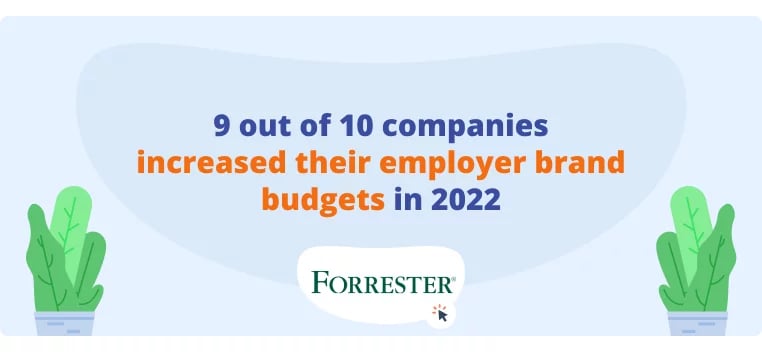
Key Components of a Strong Employer Branding Strategy: How Companies Are Transforming Their Brands
Ready to get started with employer branding? Make sure your plan includes these three core components.
Employer Value Proposition
To attract and retain talent, you need an employer value proposition. An employer value proposition is rooted in your overall mission statement and describes the brand promise you’re making to employees. The key to this is that it applies to all employees from executives to engineers to dishwashers: these are your company culture and values that every member of the team can ascribe to.
Here’s an employer value proposition example from tech giant Salesforce:
“We believe that business is the greatest platform for change — and that together, we can improve the state of the world. With the world’s #1 customer relationship management (CRM) platform, your work will help businesses and communities achieve their most ambitious business plans, solve their biggest challenges, and harness their successes to leave our planet a little better than we found it. Our values-driven company — built on trust, customer success, innovation, equality, sustainability, and a responsibility for one another and giving back to our communities — has transformed cloud computing and is committed to making the world a better place.”
In just a few sentences, they promise that as an employee you’ll:
-
Build a rewarding career in a values-driven environment
-
Help companies and communities solve big challenges
-
Improve the state of the world
Salesforce goes on to outline how it will achieve this through a work-from-anywhere policy, community service, employee development program through Trailblazer, and wellbeing initiatives.
Chipotle is another example of a good employee value proposition. Food service in general suffers a reputation problem as a career choice, but Chipotle woos employees its brand promise of Cultivating a Better World. They go on to explain that this means investing in their future, championing diversity and celebrating inclusion, and fostering a culture of well-being for employees and the planet.
To further enhance its brand promise, the fast-casual Mexican grill announced that executive pay would be directly tied to goals around increasing workforce diversity, reducing emissions, and increasing sustainable food sources.
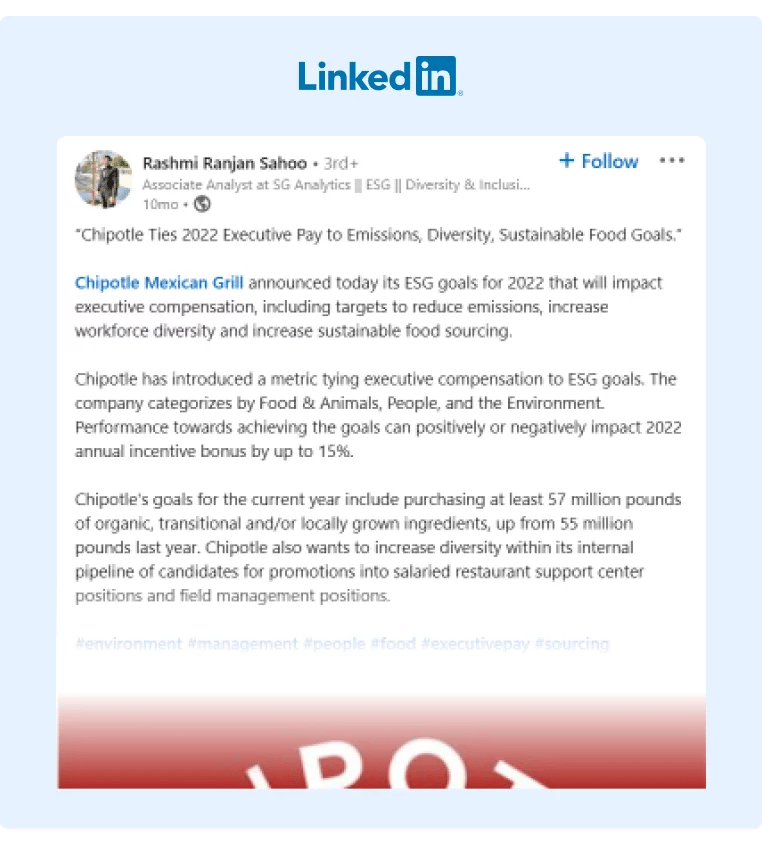
Talent Acquisition Plan
One important part of your employer branding strategy is a plan for how you’ll recruit top talent. First, you need to know what matters to your potential candidates the most. Is it compensation, company leadership, or working flexibility? Include research in your proposal if you don’t have the data you need. From there, you can develop:
-
Candidate personas outlining your top categories of potential applicants and what their motivations are
-
Employee stories that share their journeys and daily experience as an employee at your company
-
Outreach methods to recruit potential employees. Consider not only traditional methods like posting on job boards, but a referral system and incentives for employee sharing on social media channels through employee advocacy.
Talent Retention Plan
Talent attrition is a challenge for most businesses in today’s tight labor market. Replacing an employee can cost half to two times that worker’s salary, so there’s a real business cost to employees quitting.
Here are the top reasons current employees leave according to McKinsey’s 2022 Great Attrition report:
- Lack of career development and advancement (41%)
- Inadequate total compensation (36%)
- Uncaring and uninspiring leaders (34%)
- Lack of meaningful work (31%)
Let’s take a closer look at how you can address each of these in your employer branding strategy:
Employee Development
Most employees don’t want to stay in the same position for their whole careers. They want to grow their skills, try different things, and experience better compensation and social status that go along with promotions. Let’s say it again in case you missed it the first time: Lack of career development and advancement is the number one reason employees go elsewhere.

Companies need to have a clearly documented advancement process that’s shared from day one on the job. The best companies offer both internal and external internal training opportunities to sharpen employees’ skills. Forrester Consulting found that employee development was the top component included in an employer brand strategy, embraced by 71% of companies with exceptional employer brands. Make employee development a central part of your plan.
Total Compensation
Most employees know that they can jump up a pay scale by job-hopping. With inflation and economic uncertainty, your employees need a compelling reason to stay. Strategize how you’ll keep up with inflation and compete with industry pay rates to keep your employees close to home.
It’s important to note that some companies know that they’ll never be able to compete on salary. It isn’t part of their employer value proposition. However, those companies can still compete for talent with other important factors like benefits, time off, and meaningful work.
Leadership
It’s hard to understate how big of an impact leadership can have on the employee experience at your company. This starts at the supervisor level and goes all the way up to your CEO. Make a plan for how you’ll evaluate, train, and equip leaders at your company.
Meaningful Work
Connecting work to a sense of meaning is extremely important to the next generation coming into the workforce—and many already in it.
Help your workforce connect the dots between the work they’re doing and the impact that they want to have on their communities. That impact could be through the work itself or could be through give-back or service programs your company offers—you simply need to share your company values and communicate the pathways for employees to connect with theirs.

The Bobs brand has donated more than $8.5 million and saved over 1.6 million shelter animals across North America
Turn Your Company Into a Talent Powerhouse With Employer Branding
You’ve made your case. You’ve assembled your key players. You’ve assessed, brainstormed, created an employer value proposition, and laid out a plan—now it’s time for execution. As you move forward with initiatives to strengthen your brand, you’ll have a guiding strategy document as your north star.
Once it’s finalized, take the important first step of sharing the initiative with your employees. Ask for their feedback and their assistance to help strengthen the brand as it will benefit everyone. As you do this, commit to listening to and considering stakeholder concerns.
See Long-term Results With Long-term Efforts
Remember that an employer brand strategy is part marketing and messaging, but also part problem-solving to address systemic challenges. Sometimes addressing employer brand challenges takes tough conversations. For example, you may find that some of your company practices may not match your value of transparency or protecting the environment. You may find that employees perceive your leaders as uncaring.
Keep your internal stakeholders focused on the outcomes that will benefit everyone in the end. Change takes time, but improving your employer brand isn’t just perception—it’s transformation.
With the collaboration and advocacy from your current employees, you can build your company into the company of your future employees’ dreams.

